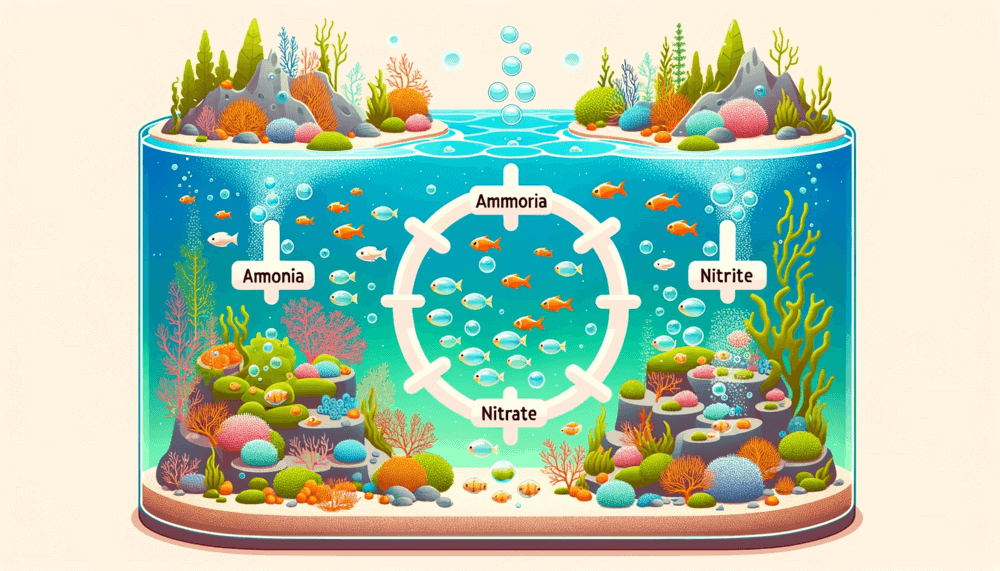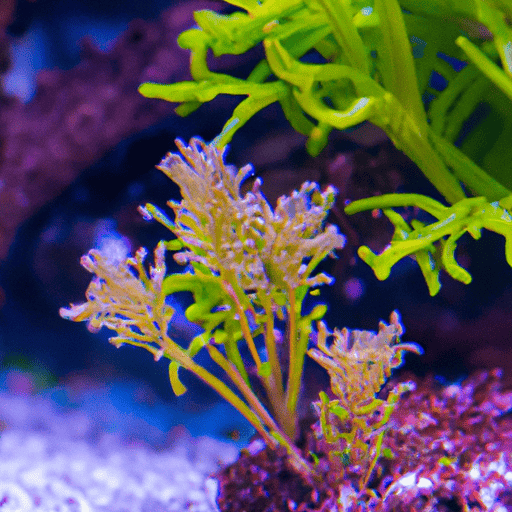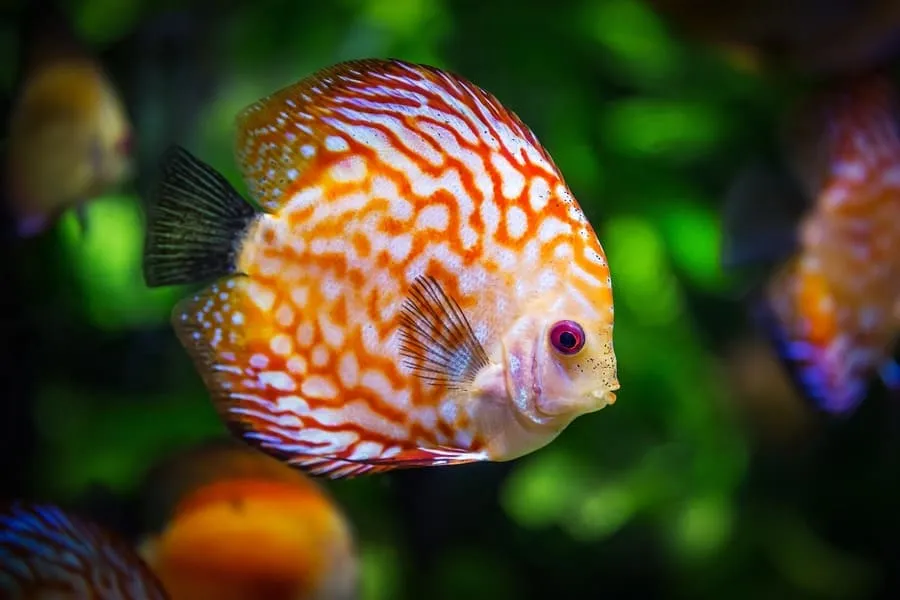What Is The Purpose Of An Air Pump In An Aquarium?
You may have wondered what exactly the purpose of an air pump in an aquarium is. Well, wonder no more! An air pump plays a crucial role in maintaining the overall health and well-being of your aquatic pets. It not only helps to oxygenate the water but also aids in creating a steady flow of water, promoting better water circulation and preventing stagnant areas. Additionally, an air pump assists in improving the efficiency of your aquarium’s filtration system, ensuring a cleaner and healthier environment for your finned friends. So let’s dive in and explore the fascinating world of aquarium air pumps!
What is an air pump in an aquarium?
An air pump is a vital piece of equipment that is used in aquariums to ensure the proper oxygenation of the water. It is essentially a device that creates a flow of air, which in turn creates water movement and enhances gas exchange. This circulation and oxygenation are necessary to maintain a healthy environment for fish and other aquatic organisms.
Definition and components of an air pump
An air pump is a small electrical device that is usually placed outside the aquarium. It consists of a motor, diaphragm or piston, valves, and an outlet. The motor powers the diaphragm or piston, causing air to be sucked in and forced out of the pump. The valves control the direction of airflow, while the outlet connects to air tubing that leads to various accessories such as air stones or diffusers.
Importance of oxygen in an aquarium
Oxygen is an essential component for the survival of all aquatic organisms. It is required for respiration, metabolism, and overall well-being. Without sufficient oxygen levels, fish and other organisms can suffer from stress, health problems, and even death. Therefore, maintaining adequate oxygenation in the aquarium is of utmost importance.
Oxygen requirements for aquatic organisms
Different aquatic organisms have varying oxygen requirements. Fish, in particular, are known to have higher oxygen demands compared to other organisms. They extract oxygen from the water through their gills, and insufficient oxygen levels can lead to suffocation. Other organisms such as bacteria, plants, and invertebrates also rely on oxygen for their metabolic processes.
Maintaining oxygen levels in the water
In a closed environment like an aquarium, oxygen levels can easily deplete due to factors such as fish respiration, decomposition of organic matter, and lack of water circulation. This is where the role of an air pump becomes crucial. By increasing oxygen levels and maintaining proper gas exchange, an air pump helps to ensure a healthy and thriving aquatic ecosystem.
Role of an air pump in maintaining oxygen levels
Increasing surface agitation
One of the primary functions of an air pump is to increase surface agitation in the aquarium. When air bubbles rise to the surface, they create movement and disturb the water’s surface. This agitation allows for the exchange of gases, allowing oxygen to dissolve into the water and carbon dioxide to escape. Without this movement, the water surface can become stagnant, leading to reduced oxygen levels.
Enhancing gas exchange
Apart from surface agitation, an air pump also promotes gas exchange throughout the water column. As the air bubbles rise, they carry oxygen from the surface to the deeper layers of the aquarium. This ensures that oxygen is distributed evenly throughout the entire tank, reaching all the organisms present. Simultaneously, carbon dioxide is transported upwards and expelled at the surface, maintaining a healthy gas balance.
Preventing oxygen depletion
In situations where oxygen levels are low, such as in heavily stocked aquariums or during hot weather, an air pump plays a critical role in preventing oxygen depletion. By constantly introducing fresh air into the tank, the air pump helps to replenish the oxygen supply and maintain optimal levels for the inhabitants. This prevents any oxygen-related stress or health issues for the fish and other organisms.
Reducing carbon dioxide buildup
In addition to maintaining oxygen levels, an air pump also helps to reduce the buildup of carbon dioxide in the aquarium. As mentioned earlier, the movement and circulation created by the air pump facilitate the expulsion of carbon dioxide at the water’s surface. This prevents the gas from accumulating and causing imbalances that can be harmful to the inhabitants.
Aeration and water circulation
Creating water movement
Apart from oxygenation, an air pump also serves as a means to create water movement within the aquarium. This movement is crucial for the overall health of the aquatic ecosystem. It helps to distribute heat and nutrients more evenly, prevents stagnation, and mimics the natural environment of the organisms.
Relieving stagnation
Stagnant water can create a range of problems in an aquarium. It can lead to the accumulation of waste, debris, and harmful bacteria, resulting in poor water quality and increased health risks for the fish and other organisms. By creating water movement, an air pump helps to alleviate stagnation and keeps the aquarium clean and healthy.
Pumping water through filtration
In many aquarium setups, an air pump is used to power the filtration system. The air pump drives the flow of water through the filter media, allowing for the removal of impurities and maintenance of water clarity. This ensures that the aquarium remains free from harmful substances and provides a safe environment for the inhabitants.
Distributing nutrients and heat
Water movement created by an air pump also helps to distribute nutrients and heat more evenly throughout the aquarium. Nutrients required for plant growth, as well as the warmth generated by heaters, can be evenly dispersed, preventing localized areas of high or low concentrations. This ensures that all organisms in the aquarium receive the necessary resources for their growth and well-being.
Benefits for fish and other aquatic organisms
Promoting fish respiration
Fish rely on efficient respiration to survive, and an air pump plays a significant role in promoting this process. By maintaining oxygen levels and providing water movement, the air pump ensures that fish can easily extract oxygen from the water through their gills. This allows them to breathe properly and avoid respiratory distress or suffocation.
Preventing stress and health issues
Insufficient oxygen levels can cause stress and contribute to various health issues in fish and other organisms. With the help of an air pump, these problems can be minimized or even eliminated. By providing adequate oxygenation and reducing carbon dioxide buildup, the air pump creates an optimal environment that supports the well-being and longevity of the aquarium inhabitants.
Supporting beneficial bacteria
In any aquarium, beneficial bacteria play a crucial role in breaking down harmful substances such as ammonia and nitrites. These bacteria require oxygen to carry out their essential functions. By maintaining optimal oxygen levels, an air pump ensures that the bacteria have enough oxygen to thrive, leading to a healthier and more stable aquarium ecosystem.
Enhancing plant growth
For aquariums with live plants, an air pump can significantly enhance plant growth. Plants rely on carbon dioxide, which is present in the water, for photosynthesis. The movement and gas exchange created by the air pump contribute to a steady supply of carbon dioxide, promoting healthy plant growth and providing a natural habitat for the aquarium inhabitants.
Encouraging natural behavior
Water movement created by an air pump can simulate the natural environment of the aquatic organisms. This promotes their natural behavior, such as schooling, exploring, and playing. It also prevents them from becoming lethargic or stressed due to stagnant conditions. Overall, an air pump helps to create a more engaging and natural environment for the fish and other organisms.
Types of aquarium air pumps
Diaphragm air pumps
Diaphragm air pumps are the most common type of air pumps found in aquariums. They use a rubber diaphragm that oscillates back and forth, generating air pressure. These pumps are generally compact, energy-efficient, and produce low levels of noise. They are suitable for small to medium-sized aquariums.
Piston air pumps
Piston air pumps function similarly to diaphragm air pumps but use a piston instead of a diaphragm to create air pressure. These pumps are more powerful and can generate higher air pressure, making them suitable for larger aquariums or situations that require stronger water movement. However, they are generally larger in size and may consume more energy.
Battery-operated air pumps
Battery-operated air pumps are portable and ideal for use during power outages, transportation of fish, or when setting up temporary aquariums. They run on batteries and provide a limited amount of air pressure. While they may not be as powerful as diaphragm or piston air pumps, they serve as reliable backup options in case of emergencies.
Solar-powered air pumps
Solar-powered air pumps, as the name suggests, run on solar energy. They are eco-friendly and can be utilized in outdoor aquariums or remote locations without access to electricity. These pumps convert sunlight into power, generating sufficient air pressure for oxygenation and water movement. They are a great option for sustainable and off-grid aquarium setups.
Choosing the right air pump for your aquarium
Considerations based on aquarium size
When choosing an air pump, the first consideration should be the size of the aquarium. Larger aquariums require air pumps with higher air pressure and flow rates to ensure adequate oxygenation and water movement. Conversely, smaller aquariums may only need a compact air pump with lower capacity. Matching the air pump to the aquarium size is essential for optimal performance.
Adjustable airflow and pressure
Some air pumps offer adjustable airflow and pressure settings. This feature allows you to customize the air pump’s output according to the specific requirements of your aquarium. For example, if you have delicate or slow-swimming fish, you may want to decrease the airflow to prevent excessive agitation. The ability to adjust airflow and pressure provides flexibility and ensures the comfort of your aquarium inhabitants.
Energy efficiency and noise levels
Energy efficiency is an important consideration when selecting an air pump. Look for models that are designed to consume minimal energy without compromising performance. Additionally, pay attention to the noise levels produced by the air pump. Quiet operation is desirable, especially if the aquarium is located in a living space where excessive noise can be bothersome.
Durability and reliability
An air pump is an investment, and it is crucial to choose a durable and reliable model that will last for an extended period. Look for air pumps made from high-quality materials that can withstand continuous operation. Reading reviews and seeking recommendations from other aquarium enthusiasts can provide valuable insights into the durability and reliability of different brands and models.
Installation and maintenance of an air pump
Determining the optimal location
When installing an air pump, it is important to consider the optimal location for placement. The air pump should be positioned above the water level to prevent potential backflow or damage in case of power loss. It should also be situated in a well-ventilated area, away from excessive moisture or heat that could affect its performance.
Connecting air tubing and accessories
To set up the air pump, connect the appropriate length of air tubing to the outlet of the pump. Ensure that the tubing is suitable for aquarium use and securely attach it to any accessories such as air stones or diffusers. Place the accessories evenly throughout the aquarium to promote effective oxygenation and water movement.
Checking for leaks and blockages
Before turning on the air pump, it is crucial to check for any leaks or blockages in the air tubing or accessories. Secure all connections tightly to prevent air from escaping or water from entering the pump. Also, check for any obstructions, such as debris or algae, that may impair the airflow. Regular inspection will help to maintain the efficiency of the air pump.
Cleaning and replacing air stones
Air stones or diffusers are prone to clogging and can accumulate debris over time. To ensure optimal performance, it is recommended to clean the air stones regularly. Soak them in a solution of water and aquarium-safe bleach, then rinse thoroughly before reattaching them to the air tubing. Additionally, replace air stones as needed to prevent obstruction or deterioration.
Regular inspection and troubleshooting
To keep the air pump functioning at its best, conduct regular inspections to ensure that all components are in good condition. Check for any signs of wear, such as frayed wires or damaged diaphragms. If the air pump starts to produce inadequate airflow or makes unusual noises, troubleshoot the issue by checking for loose connections, blockages, or any electronic malfunctions.
Additional tips for using an air pump
Using check valves and air control valves
Check valves are essential to prevent backflow of water in case of power loss or pump malfunction. Install check valves in the air tubing between the air pump and the aquarium to avoid potential damage to the pump. Additionally, air control valves can be used to regulate the airflow from the air pump, allowing you to fine-tune the oxygenation and water movement in the aquarium.
Avoiding excessive air flow
While sufficient water movement and oxygenation are essential, it is important to avoid excessive air flow in the aquarium. Strong currents or excessive agitation can stress fish and make it difficult for them to swim or rest comfortably. Observe the behavior of your aquarium inhabitants and adjust the air pump’s settings accordingly to ensure a balanced and comfortable environment.
Monitoring and adjusting oxygen levels
Regularly monitor the dissolved oxygen levels in the aquarium to ensure that they remain within the appropriate range for your specific organisms. Test kits are available to measure oxygen levels accurately. If the readings indicate low oxygen levels or imbalances, adjust the air pump’s settings or consider adding additional aeration devices to maintain optimal oxygen saturation.
Coordinating with other aquarium equipment
An air pump is just one component of a successful aquarium setup. It is important to ensure that all the equipment, such as filters, heaters, and lighting systems, work in harmony to create a healthy and balanced environment for the aquatic organisms. Coordinate the timing and settings of these devices to provide optimal conditions for your aquarium inhabitants.
Conclusion
An air pump is an indispensable tool for maintaining optimal oxygenation and water movement in an aquarium. It plays a crucial role in promoting fish respiration, preventing stress and health issues, supporting beneficial bacteria, enhancing plant growth, and encouraging natural behavior. By choosing the right air pump, installing and maintaining it properly, and considering additional tips for usage, you can create a thriving and vibrant aquatic ecosystem that will delight both you and your fish.


